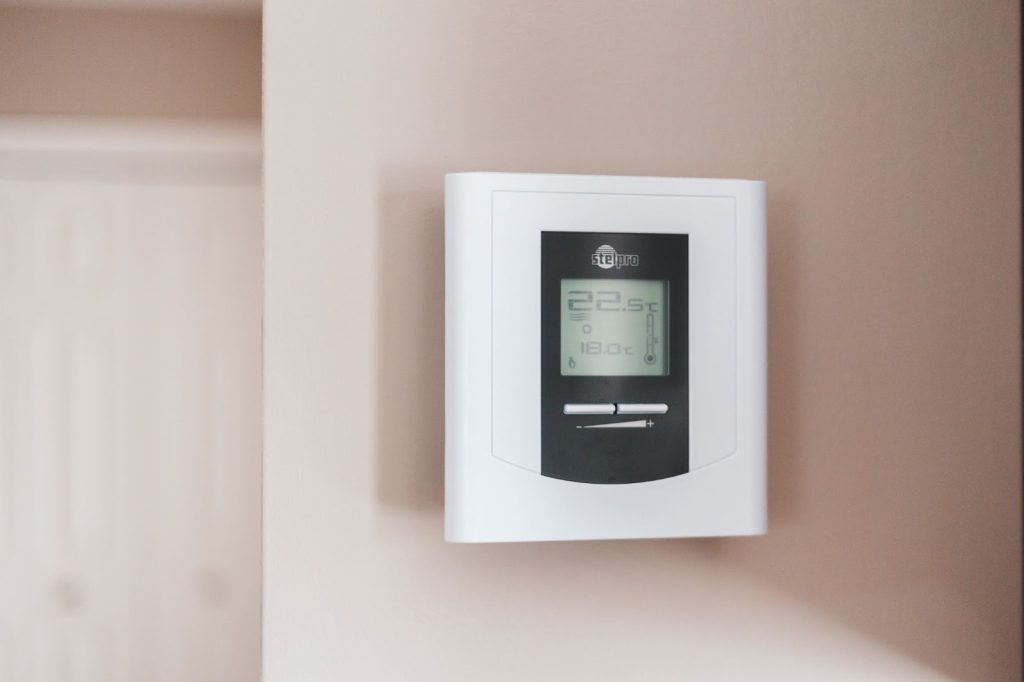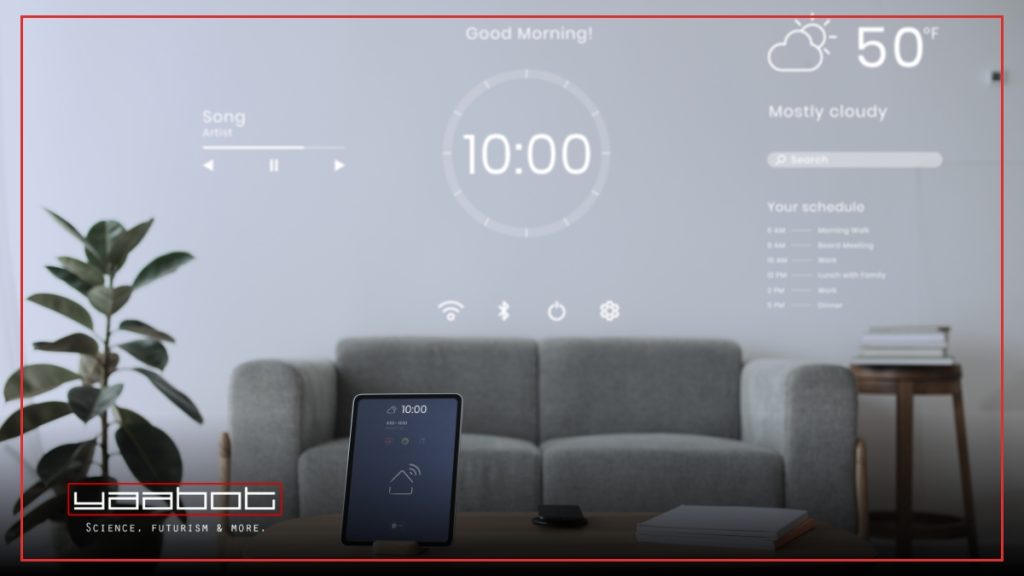Major companies like Apple and Google have established smart home technology, and the connected smart home revolution is underway. Smart home automation makes your life more convenient. It saves your money on energy bills and helps you keep your home and family safe.
We introduce you to smart home automation terms, smart home technology, and smart home devices that you must know.
What is a Smart Home?
A smart home is where appliances and devices can be controlled automatically and remotely via an internet connection. It includes everything from light bulbs and thermostats to security cameras and door locks. Smart home devices can make your life more convenient, efficient, and secure.

Here is an A-Z guide of smart home automation systems terminology to help you start your journey for smart home automation.
An A-Z guide to Smart Home Automation Systems
Without further ado, let’s look at the guide:
Automation
Smart home automation involves using smart home technology to automate household tasks with minimal human intervention. Automation in home can include things like turning on lights, adjusting the thermostat, locking doors, and playing music. Automated house systems can be controlled remotely via mobile devices or computers. Sensors or other events can also trigger them.
Bluetooth LE
Bluetooth Low Energy is a wireless protocol used to connect portable devices close to each other. It is used in automated house systems to connect and control devices like lights, thermostats, and locks.
CCTV Surveillance System

A Closed Circuit Television (CCTV) surveillance system monitors your property and records all data in cloud storage. They can be either simple or complex. Simple systems consist of a few cameras connected to a monitor. Complex systems consist of hundreds of cameras connected to servers and monitors.
Dashboard
A smart home automation system dashboard allows you to control and monitor all of your smart home automation devices. It can be displayed on various devices, including smartphones, tablets, and computers.
Energy Monitor
An energy monitor is a smart home device that helps to identify which appliances consume the most energy in your automated house system.
Fire Alarm
Smart fire alarms are like traditional smoke detectors in functionality but they can be connected to your WiFi, allowing you to get notifications on your devices even when you are not at home.
Google Assistant
Google Assistant is a powerful tool for automating your smart home. With Google Assistant, you can give voice commands to control lights, turn off the TV, set reminders and more. Like Google Assistant, Amazon’s Alexa is another prominent smart home platform. Find out whether Google or Alexa serves your needs better.
Hue
Hue is a Philips-developed protocol for smart lighting that can access a home’s light network. It can be controlled remotely using the Hue app.
IoT
Internet of Things (IoT) equips devices with embedded sensors, processors, and wireless connectivity modules to allow for home automation.
JBL Link
JBL Link is a smart home device that allows wireless music streaming via WiFi or Bluetooth. JBL Link speakers can also create custom routines, such as a “good morning” routine that turns on lights, plays music, and gives weather forecasts.
Keyless Entry
A keyless entry system allows you to enter your home without using a physical key.
Lightning Control
A lighting control system is a networked system of devices that controls lighting. Lightning control systems can turn lights on and off, adjust brightness, and create custom lighting scenes by taking voice commands.
Motion Sensor
Motion sensor is a smart home technology that detects movement and initiates automated actions, such as triggering lights, activating security systems and adjusting temperature settings.
Network Layer
Smart home technology has two layers: the network layer, which sends data to other devices, and the physical layer, which collects data using sensors, microphones, cameras, etc.
The Network layer is a smart home technology that transmits data between smart devices and other devices, such as cloud servers, smartphones, and tablets. It uses various communication protocols, such as Wi-Fi, Bluetooth, Zigbee, and Z-Wave, to connect devices and send data between them.
Outlet Adapter
Outlet adapters are smart home devices that plug into an electrical outlet and allow you to control plugged-in devices remotely. They can be used in smart homes to control devices that do not have built-in smart functionality. They are controlled using a smartphone app or voice commands.
Protocol
Protocols in smart homes are the languages that smart devices use to communicate with each other and the user. They allow devices to communicate and work together, even if different manufacturers make them.
QLED TV
QLED TVs are high-quality TVs that use quantum dot technology to produce more vibrant colors and deep blacks than traditional LED TVs. They come with built-in smart TV features, such as access to streaming apps, voice control, and smart home integration, making them a good choice for an automated house system.
Remote Access
Remote Access in an automated house system allows you to control your smart home from anywhere.
Surge Protectors
Surge protectors are smart home devices that protect devices from electrical surges caused by lightning strikes or other power disturbances. They are essential for automation in homes that often have a variety of expensive and sensitive electronic devices, such as smart TVs, smart speakers, and smart thermostats.
Thermostat

Thermostats are smart home devices that use wireless technology to control the home’s heating, ventilation, and air conditioning. They make automation in home more energy efficient.
UV Air Purifiers
UV air purifiers use ultraviolet light to kill bacteria and viruses in the air and can be controlled remotely using smartphone apps or voice commands.
Voice Control
Voice control allows you to easily operate your lighting, music, shades, climate, door locks, and other features by only giving voice commands. Voice control is a powerful tool that can make automation in home more convenient, accessible, and enjoyable.
WiFi
Wireless Fidelity (WiFi) is a wireless networking technology that allows smart devices to connect to the internet and with each other.
XML
Extensible Markup Language (XML) is a markup language employed for the exchange of data among smart devices. XML’s capabilities extend to preserving the configuration of a smart home, encompassing details like the comprehensive device inventory and their interconnections within the household ecosystem.
YouTube
YouTube is, of course, the video-sharing platform. In an automated house system, you can watch YouTube videos on your TV or other smart home devices using voice commands.
Z-Wave Controller
Z-Wave is a wireless communication protocol mainly used to automate residential and commercial buildings.
Bonus Terms
- Actuator – An actuator is a device that converts a signal from a sensor into an action. For instance, when motion detectors detect movement (signal), they typically activate a security camera (action). The actuator is responsible for this mechanism.
- Airplay – Launched in 2010, Airplay is a wireless protocol that enhances data streaming between two devices using a WiFi connection.
- AMX – AMX is a framework that creates scalable solutions for corporate automation systems. Professional integrators typically install AMX systems as they can be pretty expensive. However, they offer such performance and customization unavailable in most other smart home systems.
- Elgato Eve – Elgato Eve helps automation in home by tracking air pressure, water usage, temperature, air quality, and other elements for improved safety and security of the house.
- IP camera – An IP camera is a type of digital camera seamlessly integrated into a homeowner’s network, granting them remote access to live footage from virtually anywhere via a smartphone application over the internet.
Start Your Smart Home Automation Journey Today!
Smart homes are a rapidly growing trend, and for good reason. If you’re considering adding smart home devices to your home, this article has given you a good overview of the basics. Now it’s time to explore your options and find the right smart home devices for your needs and budget. Start your automation in home journey today and see for yourself how it improves your life!
Check out Yaabot for such guides and expert insights on tech, AI and more. Stay ahead in the digital age!


